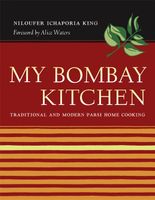🌷 Spring savings – save 25% on ckbk Premium Membership with code SPRING25
Meat and Poultry
Published 2007

Parsis brought a tradition of lavish meat eating to India, and centuries of coexistence with the vegetarian populations around us in Gujarat did not change our omnivorous, carnivorous ways—though we did avoid cows, out of respect for the Hindus, and later pigs, out of respect for the Muslims. No aspect of Parsi cooking reflects the food of pre-Islamic Persia as much as the way we deal with meat and poultry. Modern Iranian cooking also reflects the food of our common Sas-sanian ancestors, whose traditions were preserved, cultivated, and disseminated by the Arabs who conquered Persia and fell in love with the food. For example, take a stew of lamb or kid with okra or apricots. You can find similar dishes from Bombay to Tangier, taken eastward to India by Parsis, westward by the Arabs as they swept as far as Africa and Spain, each region lending something of its own. India, for instance, adds chiles, warm aromatic spices, and coconut. Other Parsi meat dishes, such as vindaloo and baffat, come to us from the Portuguese connection in Goa, and the English influence can be seen in croquettes, cutlets, and mixed grills.
Become a Premium Member to access this page
Unlimited, ad-free access to hundreds of the world’s best cookbooks
Over 150,000 recipes with thousands more added every month
Recommended by leading chefs and food writers
Powerful search filters to match your tastes
Create collections and add reviews or private notes to any recipe
Swipe to browse each cookbook from cover-to-cover
Manage your subscription via the My Membership page
In this section
Advertisement
Advertisement


